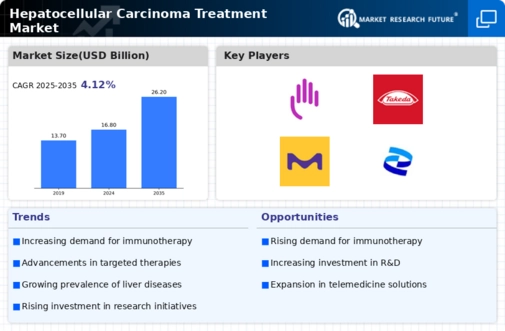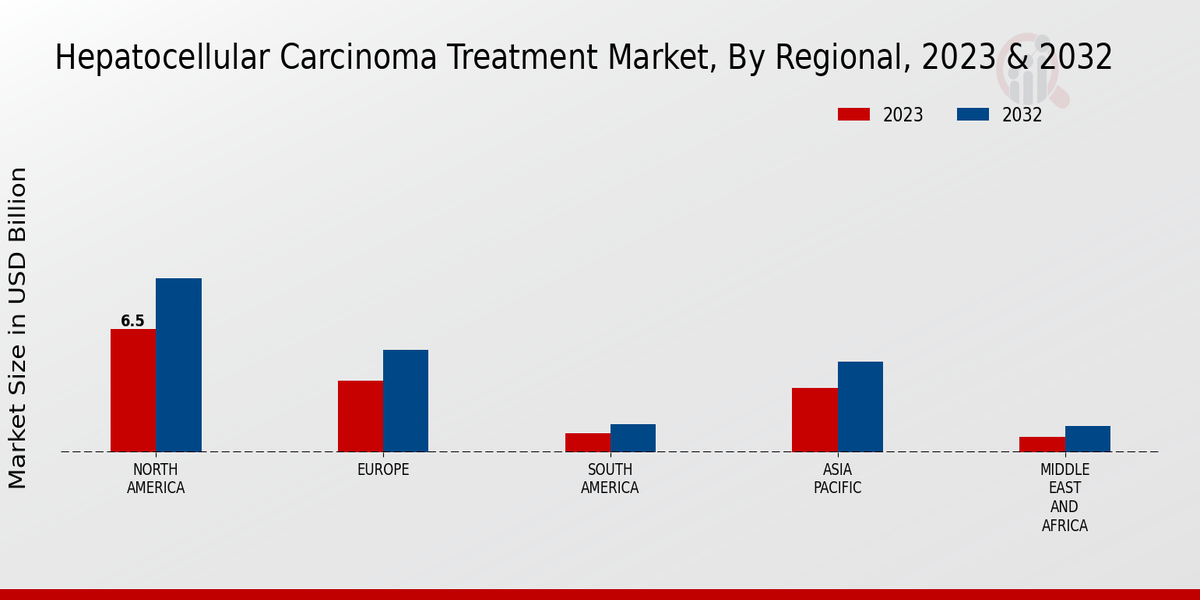Increasing Healthcare Expenditure
The Global Hepatocellular Carcinoma Treatment Market Industry benefits from rising healthcare expenditure across various regions. Governments and private sectors are investing more in healthcare infrastructure, which includes cancer treatment facilities and research initiatives. This trend is particularly evident in developing nations, where increased funding aims to improve cancer care accessibility. As healthcare budgets expand, the availability of advanced treatment options for HCC is likely to increase, thereby enhancing patient outcomes. The anticipated compound annual growth rate (CAGR) of 4.12% from 2025 to 2035 underscores the potential for sustained growth in this market segment.
Advancements in Treatment Modalities
Innovations in treatment modalities are propelling the Global Hepatocellular Carcinoma Treatment Market Industry forward. The introduction of targeted therapies and immunotherapies has revolutionized HCC management, offering patients more effective options with fewer side effects. For instance, the approval of novel agents has expanded the therapeutic landscape, enhancing survival rates and quality of life for patients. As these advancements continue, the market is expected to grow, potentially reaching 26.2 USD Billion by 2035. This evolution in treatment approaches not only improves patient outcomes but also attracts investment in research and development, further stimulating market growth.
Emerging Markets and Economic Growth
Emerging markets are playing a pivotal role in the expansion of the Global Hepatocellular Carcinoma Treatment Market Industry. Economic growth in regions such as Asia-Pacific and Latin America is leading to increased healthcare investments and improved access to cancer treatments. As these economies develop, the demand for advanced medical technologies and therapies rises, creating opportunities for market players. The convergence of economic development and healthcare access is expected to drive significant growth in the HCC treatment market, aligning with the projected market value of 26.2 USD Billion by 2035.
Growing Awareness and Screening Programs
The Global Hepatocellular Carcinoma Treatment Market Industry is also driven by heightened awareness and the implementation of screening programs. Public health campaigns aimed at educating populations about liver health and the risks associated with HCC are gaining traction. These initiatives encourage early diagnosis, which is crucial for effective treatment. As more individuals undergo regular screenings, the detection of HCC at earlier stages is likely to increase, leading to improved treatment outcomes. This proactive approach not only benefits patients but also contributes to the overall growth of the market, as more effective treatments become necessary.
Rising Incidence of Hepatocellular Carcinoma
The Global Hepatocellular Carcinoma Treatment Market Industry is experiencing growth due to the increasing incidence of hepatocellular carcinoma (HCC) worldwide. Factors such as rising rates of hepatitis B and C infections, along with the growing prevalence of liver cirrhosis, contribute to this trend. In 2024, the market is projected to reach 16.8 USD Billion, reflecting the urgent need for effective treatment options. As awareness of liver health increases, more patients seek medical attention, thereby driving demand for innovative therapies and interventions. This trend is likely to continue, influencing market dynamics significantly.















